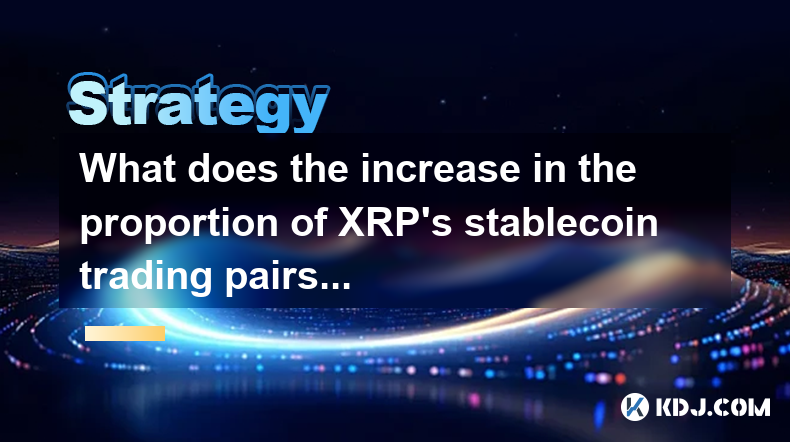-
 Bitcoin
Bitcoin $91,399.6094
4.86% -
 Ethereum
Ethereum $1,704.8681
8.06% -
 Tether USDt
Tether USDt $1.0005
0.05% -
 XRP
XRP $2.1564
3.60% -
 BNB
BNB $607.4562
1.91% -
 Solana
Solana $144.8137
6.06% -
 USDC
USDC $0.9998
0.00% -
 Dogecoin
Dogecoin $0.1730
8.98% -
 TRON
TRON $0.2448
-0.44% -
 Cardano
Cardano $0.6553
5.53% -
 Chainlink
Chainlink $13.8169
5.39% -
 Avalanche
Avalanche $21.6278
8.20% -
 UNUS SED LEO
UNUS SED LEO $9.0426
-1.05% -
 Stellar
Stellar $0.2602
3.01% -
 Sui
Sui $2.4591
11.77% -
 Shiba Inu
Shiba Inu $0.0...01330
7.32% -
 Toncoin
Toncoin $3.0077
3.87% -
 Hedera
Hedera $0.1768
4.48% -
 Bitcoin Cash
Bitcoin Cash $355.0080
3.50% -
 Litecoin
Litecoin $83.1356
6.40% -
 Hyperliquid
Hyperliquid $18.6550
4.13% -
 Polkadot
Polkadot $3.9039
2.01% -
 Dai
Dai $0.9999
0.01% -
 Bitget Token
Bitget Token $4.5079
1.72% -
 Ethena USDe
Ethena USDe $0.9996
0.03% -
 Pi
Pi $0.6406
0.99% -
 Monero
Monero $222.3341
3.54% -
 Pepe
Pepe $0.0...08496
8.99% -
 Uniswap
Uniswap $5.6500
7.25% -
 Aptos
Aptos $5.1191
2.52%
How to make profits by using the price difference of trading pairs?
Identifying and executing profitable price difference trades requires careful research, analysis, and risk management, maximizing potential returns while mitigating risk.
Feb 25, 2025 at 03:24 am

Key Points:
- Understanding Price Differences and Trading Pairs
- Identifying Profitable Trading Pairs
- Calculating Potential Returns
- Executing Profitable Trades
- Managing Risk and Maximizing Returns
Step 1: Understanding Price Differences and Trading Pairs
In cryptocurrency trading, a trading pair represents two different cryptocurrencies that can be traded against each other. Each trading pair has its own unique bid and ask prices, which determine the exchange rate between the two currencies.
When the bid and ask prices of a trading pair differ significantly, it creates an opportunity for profit. This difference is known as the "price spread." Traders can take advantage of this spread by simultaneously buying the cheaper currency and selling the more expensive currency in the same pair.
Step 2: Identifying Profitable Trading Pairs
Identifying profitable trading pairs requires research and analysis. Traders should consider the following factors:
- Trading Volume: Higher volume pairs provide better liquidity and reduce the risk of slippage.
- Spread: Pairs with wide spreads offer greater potential for profit, but also higher risk.
- Volatility: Volatile pairs offer opportunities for quick profits but also increase the risk of losses.
- Correlation: Pairs with high correlation move in the same direction, making it difficult to profit from price differences.
Step 3: Calculating Potential Returns
To estimate the potential return from a price difference trade, traders can use the following formula:
Potential Return = (Ask Price / Bid Price) * (Spread Percentage)For example, if the ask price is $11,000 and the bid price is $10,900, with a spread of 0.9%, the potential return would be:
Potential Return = (11000 / 10900) * 0.009 = 0.82%Step 4: Executing Profitable Trades
Once a profitable trading pair is identified, traders should execute a trade by:
- Placing a buy order for the cheaper currency at the bid price.
- Simultaneously placing a sell order for the more expensive currency at the ask price.
Traders can choose to use a market order or a limit order to execute their trades. Market orders are executed immediately at the current market price, while limit orders are executed only when the price reaches a specified level.
Step 5: Managing Risk and Maximizing Returns
Trading with price differences involves risk. To mitigate risk and maximize returns, traders should:
- Use stop-loss orders to limit potential losses.
- Manage their positions carefully, closing trades when a desired level of profit is reached.
- Diversify their portfolio across multiple trading pairs to reduce overall risk.
- Understand the underlying fundamentals and technical analysis of the traded currencies.
FAQs:
- What are arbitrage opportunities? Arbitrage opportunities occur when the same asset is available at different prices on different exchanges. Traders can profit by buying at the lower price and selling at the higher price.
- Can price differences be guaranteed? No, price differences are not guaranteed. Market conditions can change rapidly, causing spreads to narrow or disappear.
- How do I calculate the spread percentage? The spread percentage is calculated by dividing the spread by the bid price.
- What is the best trading pair for price differences? The best trading pair is the one with the highest spread percentage and sufficient liquidity.
- Can I use trading bots to profit from price differences? Yes, trading bots can be used to automate the process of identifying and executing profitable trades.
Disclaimer:info@kdj.com
The information provided is not trading advice. kdj.com does not assume any responsibility for any investments made based on the information provided in this article. Cryptocurrencies are highly volatile and it is highly recommended that you invest with caution after thorough research!
If you believe that the content used on this website infringes your copyright, please contact us immediately (info@kdj.com) and we will delete it promptly.
- Pi Network's native cryptocurrency, PI, is gaining traction once more after a significant price drop.
- 2025-04-23 05:05:12
- Unicoin Has Rebuffed the U.S. Securities and Exchange Commission's (SEC) Attempt to Negotiate a Settlement Agreement
- 2025-04-23 05:05:12
- Mantra (OM) Founder and CEO Mullin Announces Plan to Burn His Personal Allocation of 150 Million OM Tokens
- 2025-04-23 05:00:12
- Autonomous AI Agents Could Create Their Own Crypto-Monetary Hegemony
- 2025-04-23 05:00:12
- What Happened to Shares of Coinbase (COIN) Jumped 10.3%?
- 2025-04-23 04:55:12
- Best sweeps casino mobile apps + promo codes for new users
- 2025-04-23 04:55:12
Related knowledge

Where can I find the current average holding cost of XRP in the market?
Apr 22,2025 at 11:00pm
Where can I find the current average holding cost of XRP in the market? Finding the current average holding cost of XRP in the market can be a challenging task, as this information is not readily available on most mainstream cryptocurrency platforms. However, there are several methods and resources that you can use to estimate this figure. In this artic...

Is BCH's UTXO age distribution useful for judging buying and selling points?
Apr 23,2025 at 02:07am
The concept of UTXO (Unspent Transaction Output) age distribution in Bitcoin Cash (BCH) can be a valuable tool for analyzing market trends and potentially identifying buying and selling points. UTXO age distribution refers to the age of unspent outputs in the blockchain, which can provide insights into the behavior of different types of investors and th...

Can BCH's PSAR indicator chase the rise when it turns from empty to long?
Apr 22,2025 at 10:35pm
The Parabolic Stop and Reverse (PSAR) indicator is a popular tool among traders in the cryptocurrency market, including those trading Bitcoin Cash (BCH). The PSAR indicator is designed to identify potential reversals in the price trend of an asset. When the PSAR indicator turns from empty to long, it suggests a potential bullish trend, prompting traders...

What does the increase in the proportion of XRP's stablecoin trading pairs indicate?
Apr 23,2025 at 02:00am
The increase in the proportion of XRP's stablecoin trading pairs indicates a significant shift in the trading dynamics of XRP on cryptocurrency exchanges. This trend suggests several important factors at play within the XRP ecosystem and the broader crypto market. Let's delve deeper into what this increase signifies. Higher Liquidity and Trading VolumeT...

What does BCH's SOPR indicator fall below 1 mean?
Apr 23,2025 at 01:29am
The SOPR (Spent Output Profit Ratio) is a significant indicator used in the cryptocurrency market, particularly for analyzing the profitability of transactions on the Bitcoin Cash (BCH) network. When BCH's SOPR falls below 1, it signals that the average investor is selling their BCH at a loss. This article will delve into the implications of this phenom...

What should I do if SOL's NVT signal diverges?
Apr 23,2025 at 12:07am
When you encounter a situation where the SOL's NVT (Network Value to Transactions) signal diverges, it's important to understand what this means and how to respond effectively. The NVT ratio is a metric used to evaluate the value of a cryptocurrency network relative to the transaction volume it processes. A divergence in this signal can indicate potenti...

Where can I find the current average holding cost of XRP in the market?
Apr 22,2025 at 11:00pm
Where can I find the current average holding cost of XRP in the market? Finding the current average holding cost of XRP in the market can be a challenging task, as this information is not readily available on most mainstream cryptocurrency platforms. However, there are several methods and resources that you can use to estimate this figure. In this artic...

Is BCH's UTXO age distribution useful for judging buying and selling points?
Apr 23,2025 at 02:07am
The concept of UTXO (Unspent Transaction Output) age distribution in Bitcoin Cash (BCH) can be a valuable tool for analyzing market trends and potentially identifying buying and selling points. UTXO age distribution refers to the age of unspent outputs in the blockchain, which can provide insights into the behavior of different types of investors and th...

Can BCH's PSAR indicator chase the rise when it turns from empty to long?
Apr 22,2025 at 10:35pm
The Parabolic Stop and Reverse (PSAR) indicator is a popular tool among traders in the cryptocurrency market, including those trading Bitcoin Cash (BCH). The PSAR indicator is designed to identify potential reversals in the price trend of an asset. When the PSAR indicator turns from empty to long, it suggests a potential bullish trend, prompting traders...

What does the increase in the proportion of XRP's stablecoin trading pairs indicate?
Apr 23,2025 at 02:00am
The increase in the proportion of XRP's stablecoin trading pairs indicates a significant shift in the trading dynamics of XRP on cryptocurrency exchanges. This trend suggests several important factors at play within the XRP ecosystem and the broader crypto market. Let's delve deeper into what this increase signifies. Higher Liquidity and Trading VolumeT...

What does BCH's SOPR indicator fall below 1 mean?
Apr 23,2025 at 01:29am
The SOPR (Spent Output Profit Ratio) is a significant indicator used in the cryptocurrency market, particularly for analyzing the profitability of transactions on the Bitcoin Cash (BCH) network. When BCH's SOPR falls below 1, it signals that the average investor is selling their BCH at a loss. This article will delve into the implications of this phenom...

What should I do if SOL's NVT signal diverges?
Apr 23,2025 at 12:07am
When you encounter a situation where the SOL's NVT (Network Value to Transactions) signal diverges, it's important to understand what this means and how to respond effectively. The NVT ratio is a metric used to evaluate the value of a cryptocurrency network relative to the transaction volume it processes. A divergence in this signal can indicate potenti...
See all articles























































































